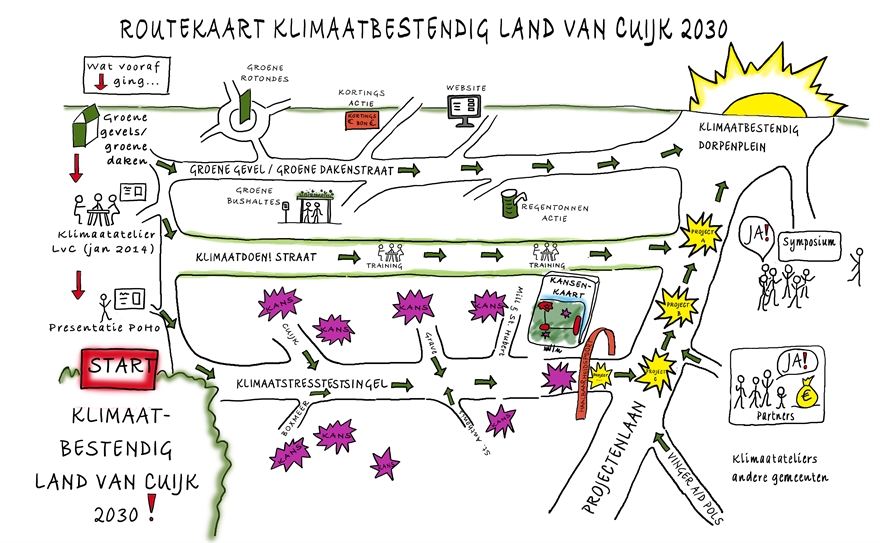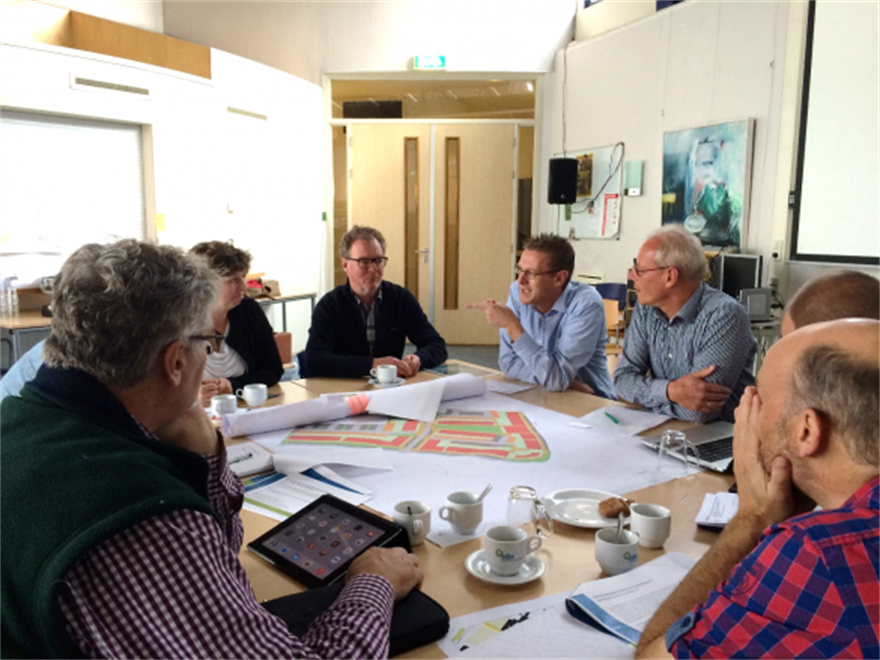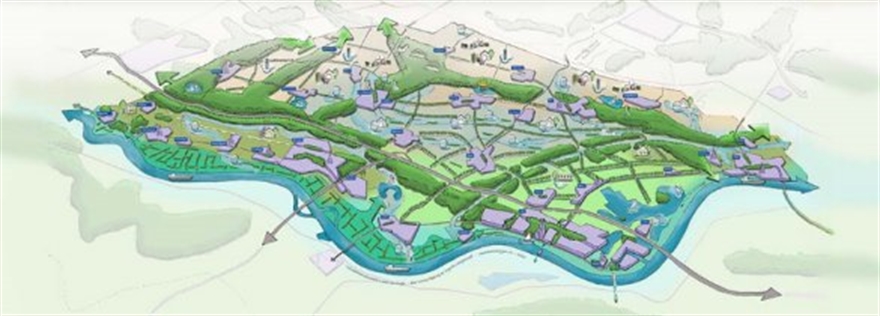Impactproject Land van Cuijk
Five Land van Cuijk municipalities, the Aa en Maas district water board, and the Province of Noord Brabant have been climate-proofing the Land van Cuijk area for a year now. The region has adopted a three-track policy that involves working on climate adaptation at every level of scale and across subject disciplines and organisations: an approach that befits the area and is identifiable for those who are putting it into practice. After all, it is not just the big cities that have to cope with the consequences of climate change. Rural municipalities such as those in the Land van Cuijk are faced with drought, increased pluvial flooding, and heat stress in the town centres more and more often. What started with a climate workshop for a number of enthusiastic civil servants has by now grown into a movement, a coherent body of projects in which government authorities, citizens, and businesses expend their best efforts to climate-proof the Land van Cuijk.
In March 2015, the responsible administrators of the municipalities and the district water board signed the declaration of intent entitled Klimaatbestendig Land van Cuijk [Climate-proof Land van Cuijk]. As the Land van Cuijk climate coalition, the five municipalities of Boxmeer, Cuijk, Grave, Mill & St. Hubert, and Sint Anthonis, along with the Aa & Maas district water board, will thus start working on this issue, but they are also expressly looking for new partners to join this climate coalition.
The approach adopted in the Land van Cuijk is based on the spatial adaptation guidelines that assist in making an area climate-proof and water-resilient. The Analysis – Ambition – Action steps have been substantiated in a random order.

Results
Action
The first track of the Roadmap involves the “Groene Gevel / Groene Dakenstraat” [Green Façades / Green Roofs Street]. This sub-project focuses on raising awareness among citizens. In March and April 2015, a regional garden greening campaign was held, during which the five mayors called upon residents to climate-proof their gardens. The campaign involved the collaboration of local entrepreneurs (among whom were the managers of some home improvement centres) and primary schools. Traditional and social media have devoted a great deal of attention to the project. Climate-proof model gardens have been constructed at the premises of participating entrepreneurs.
The second street of the Roadmap is the Klimaat Doen! [Climate Action!] street. This sub-project focuses on raising climate awareness among civil servants from various subject disciplines, and on the question how climate-proof action can be embedded in municipal projects. Many municipalities have already made proper arrangements to this end with respect to the water taskings. The incorporation of the topics of drought and heat stress into projects and policy still needs some attention.
To flesh this out, a workshop has been organised in which integrated project teams of the municipalities and the district water board set to work on projects they had submitted themselves. The project teams were assisted by external experts. Several municipalities continued these projects after the workshop, under the supervision of the climate project. In Boxmeer this has resulted, among other things, in the city council’s opting for the “optimum urban development climate variant” rather than going with the usual urban development interpretation.
At the end of 2014, some twenty staff members of the municipalities, district water board, and the province visited various model projects in Rotterdam. Explanations were provided by various parties, including some employees of the city of Rotterdam.

Workshops for integrated project teams
Analysis
The Land van Cuijk will also be faced with the consequences of climate change. Pragmatic research into pluvial flooding, river flooding, heat stress, and drought has been conducted in order to substantiate this. Local know-how has been mapped out on the basis of available data and several interviews with municipal staff. Existing data was subsequently combined in order to identify bottlenecks with respect to “too wet”, “too dry” and “too hot”. The next step focused on the positive effects of climate change. The Klimaatkansenkaart [Map of climate opportunities] examines the impact of climate change on the Land van Cuijk from various perspectives.
Here are the top five climate opportunities:
1. Improving and expanding green/blue climate belts
2. Initiating agricultural innovations
3. Developing new country estates
4. Reinforcing green, healthy town centres
5. Recreational impetus

Land van Cuijk map of climate opportunities
In the period ahead, these opportunities will be explored in more detail. This involves examining whether this project can provide ongoing projects with an additional impetus, or whether new projects can be rolled out. Regional partners such as the Southern Agriculture and Horticulture Organization (ZLTO) and the Brabant Environmental Federation (BMF) are requested to join in, as are local entrepreneurs.
Ambition
The region is firmly resolved to embark on climate-proofing. The administrators made that clear on 27 March 2015 by signing the Climate-proof Land van Cuijk declaration of intent. During the concluding symposium they declared that they will start to flesh out climate-proofing together, as the Climate Coalition, but also in collaboration with new partners, and propagate its importance to residents and businesses.
Contact persons
Arthur Hofstad
ODBN
+31(0)6 21 59 42 28
Ingrid Langenhoff
Voorelkaarkrijgen
+31(0)6 20 37 97 26
